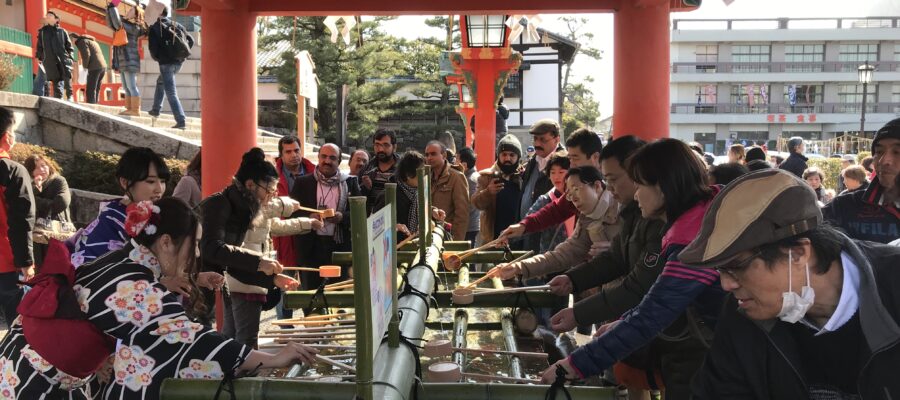京都の一番人気観光スポットはどこでしょうか?金閣寺も人気ですが、いつも長蛇の列が続いているのは伏見稲荷大社かなとも思います。もちろん清水寺も人でいっぱいですが。3つの内、拝観料が不要なのは伏見稲荷大社のみなので、私もよく海外からの研修生をお連れしました。もしかしたら、金閣寺以上の回数を訪問しているかもしれません。
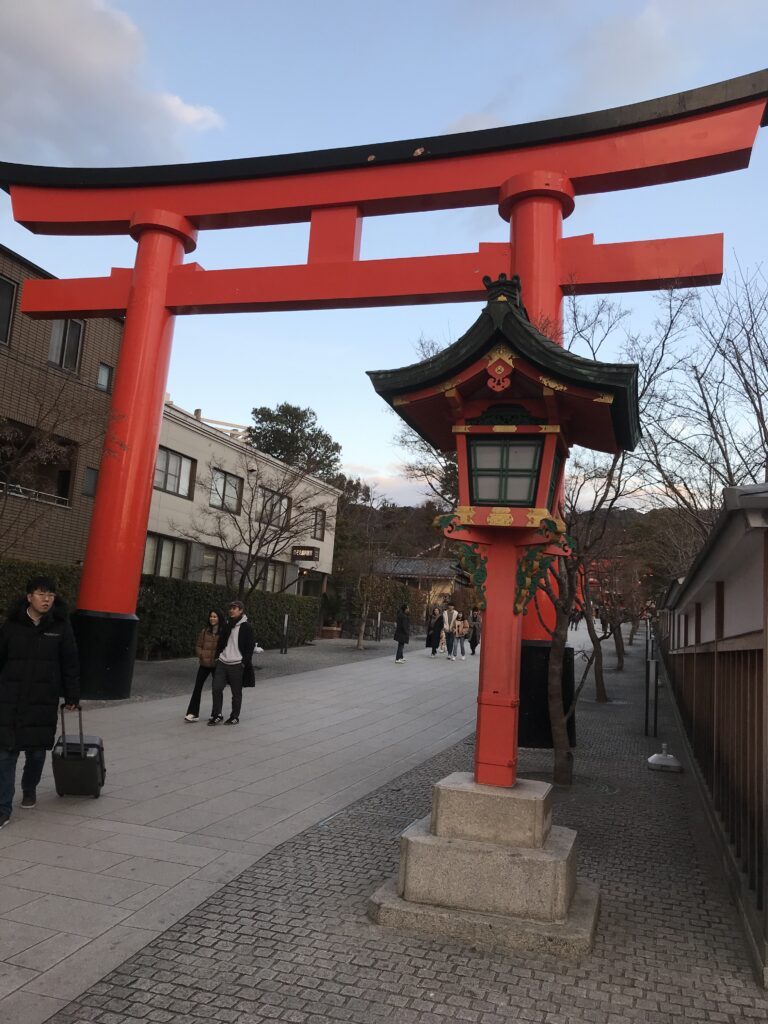
みなさんは、いつもどちらの参道を通って来ますか?JRで来た人は、正面の第一鳥居が立つ表参道から入っていきますよね。逆に、バスあるいは京阪電車で来た人は、両脇にお店が沢山ある方の参道から入っていきませんか?写真を撮るなら表参道の方がいいと思いますが、楽しい雰囲気を味わってもらうには、お店の多い参道から入ってもらうのも一案です。
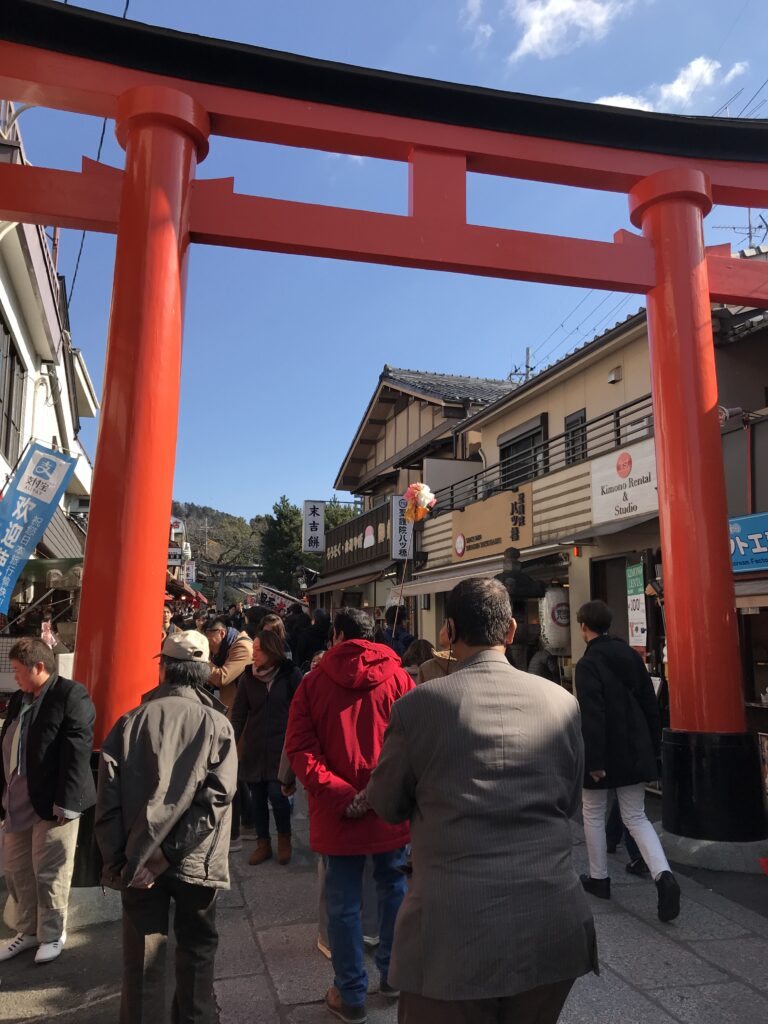
いつも第二鳥居の前に集合してもらって、記念撮影をすることが多いです。背景に楼門も入るので、お薦めの写真スポットです。その後、手水舎で手と口の漱ぎ方を、みなさんに実践していただきます。郷に入れば郷に従えで、イスラム圏の方々も、いくつかの例外を除いて神道式のマナーに従っていただけます。
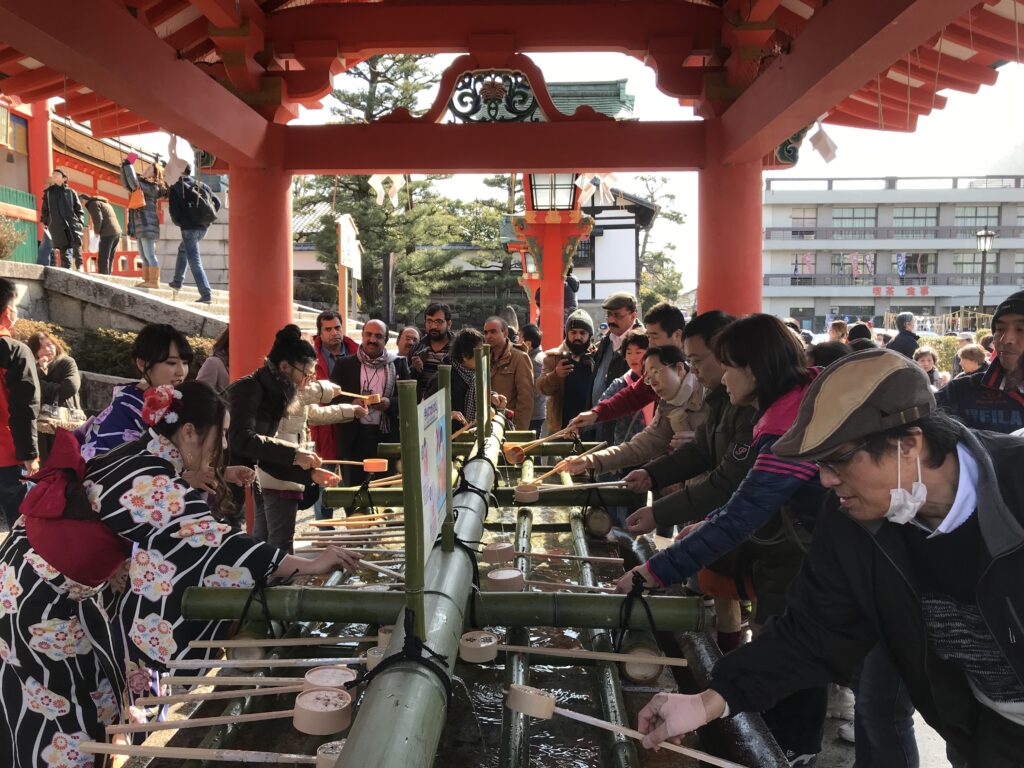
楼門も立派ですね。豊臣秀吉が、その母の病気平癒に感謝して、建立した楼門です。ただ、秀吉は神々より自分が上と考えていたようなので、自分の思い通りにならないと、全国のキツネを絶滅させると、脅しをかけたこともあると、何かの本で読んだことがあります。
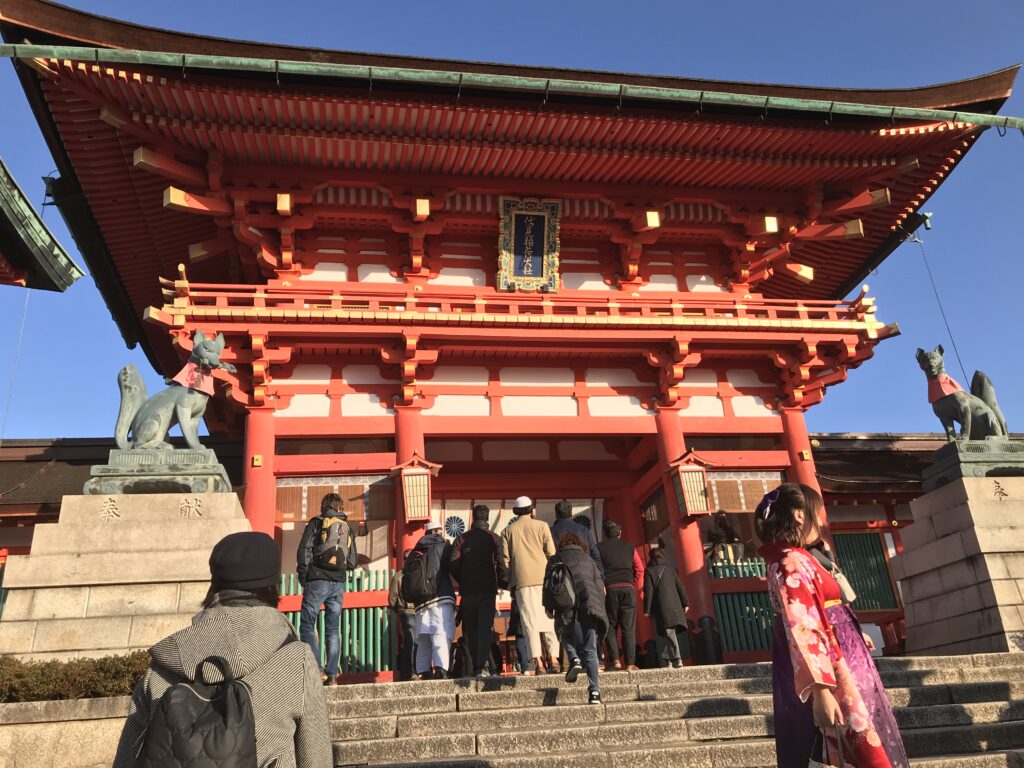
神社ですので、楼門には仁王さんが立っているのではなく、武家の木造が両方に安置されています。仏に守ってもらうのではなく、武士たちが守ってくれています。その前には、狛犬ではなく、キツネの像が2体、左右で参拝客を迎え入れてくれます。(完)

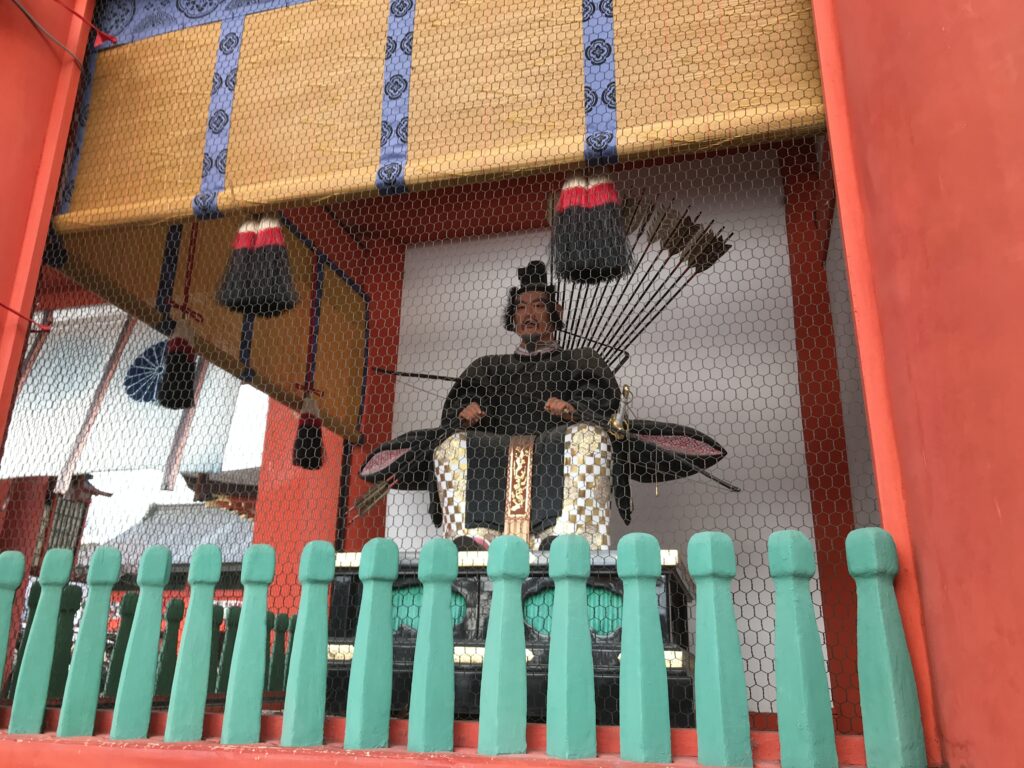
伏見稲荷大社の御朱印
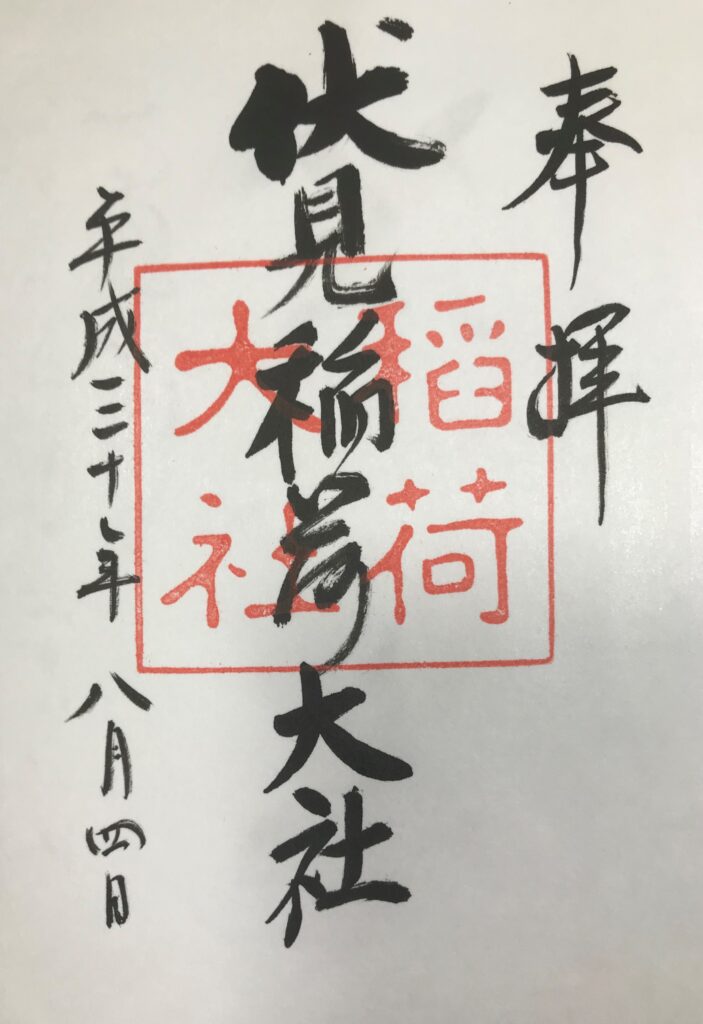
京都の教科書
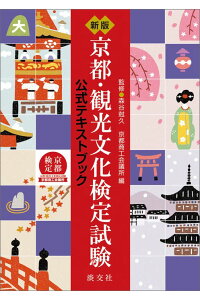
新版 京都・観光文化 検定試験 公式テキストブック 公式テキストブック [ 京都商工会議所 ]
価格:2,420円
(2021/9/11 14:06時点)
感想(5件)
Fushimi Inari-taisha Shrine (1) Approach to the tower gate (Kyoto City, Kyoto Prefecture)
Where is the most popular tourist spot in Kyoto? Kinkakuji (Golden Pavilion) Temple is popular, but I also think that Fushimi Inari Taisha Shrine is the one that always has long queues. Of course, Kiyomizu-dera Temple is also packed with people, but of the three, only Fushimi Inari-taisha is free of admission fee, so I have often taken trainees from abroad there. I have probably visited the Fushimi Inari Taisha more times than the Kinkakuji Temple.
If you come by JR train, you enter from Omotesando, where the first torii (gateway) stands in front of the shrine. On the other hand, if you come by bus or Keihan train, don’t you enter from the approach with many stores on both sides? Omotesando is better for taking pictures, but if you want people to experience the fun atmosphere, it is a good idea to have them enter from the approach with many stores and food stands.
I always have them gather in front of the second torii gate for a commemorative photo. This is a recommended photo spot because the main gate will be in the background. Afterwards, we ask everyone to practice washing their hands and mouths at the water purification booth. As in any country, the Muslims are welcome to follow the Shinto etiquette, with a few exceptions.
The gate is also magnificent. It was built by Toyotomi Hideyoshi in gratitude for his mother’s recovery from illness. However, I have read in a book that Hideyoshi once threatened to exterminate all foxes in Japan if he did not get his way.
Since this is a shrine, there is no Niou-san standing at the tower gate, but a wooden structure of a samurai family enshrined in both. Instead of being protected by the Buddha, they are protected by the warriors. In front of them, two statues of foxes, not Komainus (Guardian Dogs), welcome visitors on either side. (End)
Sanctuaire Fushimi Inari-taisha (1) Approche de la porte de la tour (ville de Kyoto, préfecture de Kyoto)
Quel est le site touristique le plus populaire de Kyoto ? Le temple Kinkakuji (Pavillon d’or) est populaire, mais je pense aussi que le sanctuaire Fushimi Inari Taisha est celui qui a toujours de longues files d’attente. Bien sûr, le temple Kiyomizu-dera est également très fréquenté, mais sur les trois, seul le sanctuaire Fushimi Inari-taisha est gratuit, c’est pourquoi j’y ai souvent emmené des stagiaires étrangers. J’ai probablement visité le Fushimi Inari Taisha plus souvent que le temple Kinkakuji.
Si vous venez en train JR, vous entrez par Omotesando, où le premier torii (porte) se dresse devant le sanctuaire. Par contre, si vous venez en bus ou en train Keihan, n’entrez-vous pas par l’approche avec de nombreux magasins des deux côtés ? Omotesando est mieux pour prendre des photos, mais si vous voulez que les gens profitent de l’atmosphère amusante, c’est une bonne idée de les faire entrer par l’approche avec de nombreux magasins et stands de nourriture.
Je les fais toujours se rassembler devant la deuxième porte torii pour une photo commémorative. C’est un endroit recommandé pour la photo car la porte principale sera en arrière-plan. Ensuite, nous demandons à chacun de se laver les mains et la bouche au stand de purification de l’eau. Comme dans tout pays, les musulmans sont invités à suivre l’étiquette shintoïste, à quelques exceptions près.
La porte est également magnifique. Elle a été construite par Toyotomi Hideyoshi en remerciement de la guérison de sa mère. Cependant, j’ai lu dans un livre que Hideyoshi a un jour menacé d’exterminer tous les renards du Japon s’il n’arrivait pas à ses fins.
Comme il s’agit d’un sanctuaire, il n’y a pas de Niou-san debout à la porte de la tour, mais une structure en bois d’une famille de samouraïs enchâssée dans les deux. Au lieu d’être protégés par le Bouddha, ils sont protégés par les guerriers. Devant eux, deux statues de renards, et non de Komainus (chiens gardiens), accueillent les visiteurs de chaque côté. (Fin)
